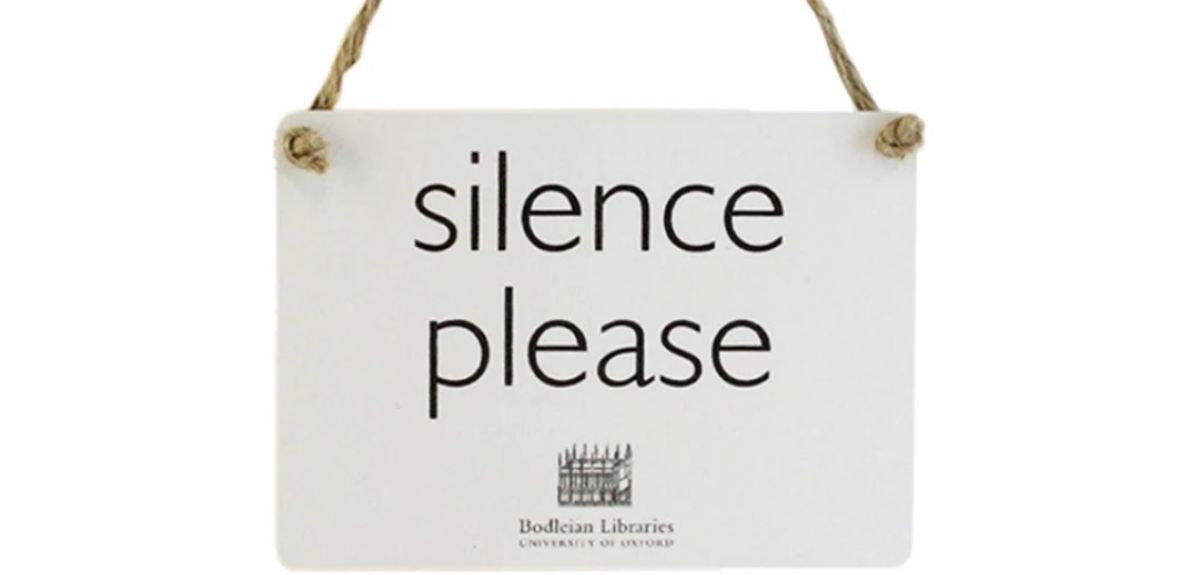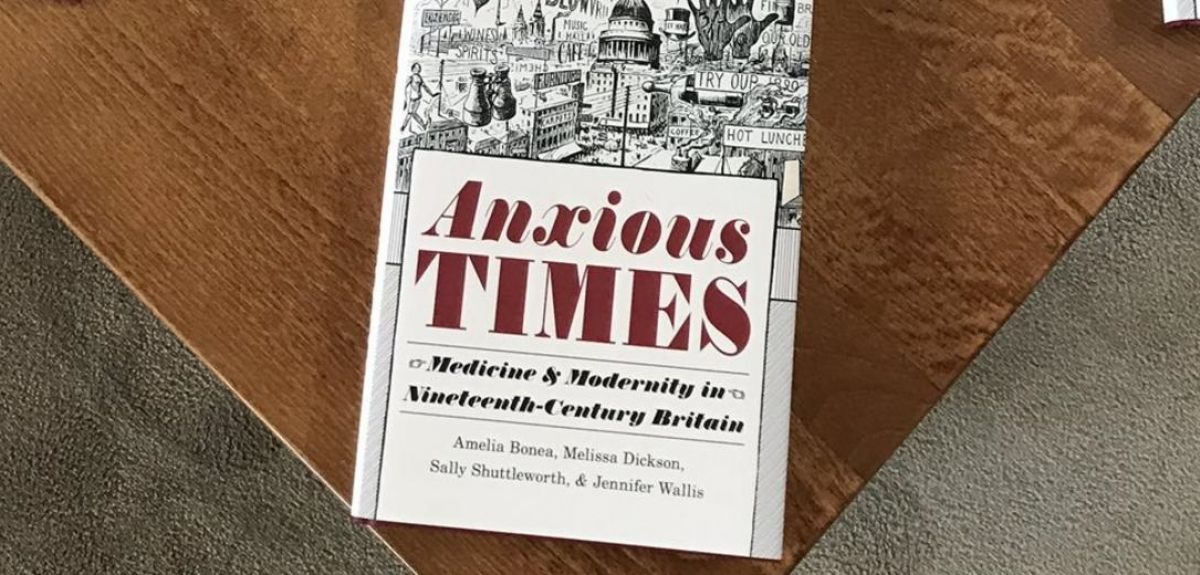Features
George Busby of Oxford University's Big Data Institute discusses his team's research into human genetic resistance to malaria and humanity's age-old struggle against the disease.
Humans have long been thwarted by ‘the fever’. References to malaria’s infamous febricity are found across antiquity, from writings by the four thousand-year-old Vedic sages of ancient India to the Greek physician Hippocrates. But the disease, caused by a group of parasites belonging to the Plasmodium genus, has troubled our ancestors and close relatives for much longer. A range of malaria species infect apes, monkeys and birds across the tropical world and we now know that about 50,000 years ago the ancestors of Plasmodium falciparum, the parasite responsible for most of the current human burden of the disease, transformed from infecting gorillas to parasites that can infect us.
This means that throughout our history, wherever the ecological conditions have been able to support the mosquitoes that transmit the disease (including the marshes of Kent well into the 19th Century) we’ve been accompanied by the blood parasite which many believe to be one of the largest killers of people in human history. Reports of malaria killing half of the people who have ever lived are likely to be wide of the mark, however.
Given this shared history, you might expect humans to have evolved ways to neutralise the devastating impact of malaria. In evolutionary terms, the stakes are high - falciparum malaria is most deadly in young children - so there is a clear advantage to adapting to beat the parasite. And, because evolution works with new mutations in DNA that cause genes to work in new and different ways, adaptations that gave our ancestors one up against the parasites should be found across the human genome.
One such adaptation was discovered in the 1950 when Anthony Allison observed that there tended to be more people with sickle cell trait in malarial areas than places without the disease. Perhaps, he thought, because sickle cell trait affects the function of people’s blood cells, it afforded some sort of protection against malaria parasites, which thrive by infecting their host’s blood cells. This idea was a development of the ‘Malaria Hypothesis’, invented in 1948 by famed geneticist JBS Haldane, which proposed that certain human traits, particularly those involving blood groups, rise to high frequencies in some populations because they protect people from malaria. The relationship between sickle cell and malaria was soon confirmed when children in Uganda with sickle cell trait were shown to have fewer malaria parasites in their blood than those without the trait. Sickle cell trait is now known to be caused by a single letter change in the genetic code and is the canonical example of human evolution to infectious disease.
Epidemiological research over the intervening years has provided further evidence of human adaptation to malaria. But to go further and investigate the impact of malaria on our DNA requires large well curated datasets of DNA from across the tropics. And, because much of the burden of malaria is in Africa, whose populations are among the most genetically diverse on earth, we also need to think carefully about the statistical approaches that can tease out the real genetic signals from background variation.
Addressing old problems with new data
Big datasets and statistical methods have recently become available thanks to large long-term international collaborative efforts. One such collaboration is the Malaria Genomic Epidemiology Network (MalariaGEN), a global network of malaria researchers that have worked together over the last 20 years to build the largest dataset of human genomes yet assembled for malaria research.
In a new paper using data from over 17,000 people from nine African countries, Vietnam and Papua New Guinea, we explored the extent to which adaptation to malaria has left footprints in the human genome. We used a method called Genome Wide Association Study (GWAS) which compares the DNA of people who have suffered from severe malaria with a control set of people who did not have the disease. The concept of a GWAS is straightforward: you scan these two groups of genomes to look for systematic differences in the genetic code between the malaria cases and the population controls. In practice though this is incredibly difficult as there are many places in the genome where these two groups might differ for reasons that have nothing to do with malaria. Nevertheless, with appropriate care, it is possible to identify regions of the genome where such differences occur, and these provide evidence of association with malaria susceptibility and hint that they might have played a role in evolution against malaria.
Blood cell evolution
Our GWAS found five regions of the genome with convincing evidence of association with malaria. Encouragingly, four of these regions contained genes involved with blood cell formation and function, which one might expect given that this is where the parasites attack. The most compelling case for genetic association with malaria is the gene controlling sickle cell trait, mentioned above. Individuals with this trait were up to ten times less likely to get malaria than those without. We found further evidence of protection from malaria at the gene that controls the main human ABO blood groups. Our analysis supports previous work that has shown that being blood group O in Africa offers some protection from severe malaria. But this association is complex, and strangely, you are at a greater risk of contracting severe malaria in Papua New Guinea with this blood group. Our analysis also corroborated our recent discovery that the individual’s carrying the Dantu blood group are protected from malaria. This blood group is rare however, and currently mainly found in people from East Africa, particularly Kenya.
Whilst we are confident that all five of these regions are associated with malaria, together they only account for about 10% of the genetic contribution to malaria susceptibility. Given the size of the dataset this a conundrum: it suggests that although we know that there are more genetic variants that influence an individual’s malaria susceptibility, we don’t know what they are. One possibility is that malaria susceptibility is controlled by many genetic variants spread across the whole genome, each with a small individual effect. This so-called polygenic model of adaptation is increasingly being used to explain predisposition to a number of diseases, and although our method is less good at picking up these types of signal, it’s an avenue for future work. Another possibility is that variation in especially complex regions of the genome, that are hard to access using our current data, is involved. Finally, it’s also possible that the parasite has itself evolved to overcome human adaptation in an evolutionary arms race. Parasites and humans may have been adapted to each other in slightly different ways in different parts of the world, so the mutations that help against the parasite in East Africa might not be so helpful in West Africa. Future work is planned to explore the fascinating idea of human-parasite coevolution.
So, have the loci we've discovered been driven to high frequency by natural selection, as Haldane suggested? Well yes and no. We found that these variants are systematically more likely to be found in individuals from sub-Saharan Africa than from regions where malaria has been less prevalent, showing how the genomes of Africans have been shaped through millennia of onslaught from the malaria parasite. But the variants themselves are quite different to each other, with some being very rare except in specific geographical locations, and some found at high frequency all over the globe. This suggests that further factors might be at play. Our paper highlights the potential advances in understanding that large, coordinated data sharing networks can provide in the battle against this most ancient foe.
The full paper, 'Insights into malaria susceptibility using genome-wide data on 17,000 individuals from Africa, Asia and Oceania,' can be read in Nature Communications.
Convocation House hosted a rather unique hour-long concert last month. It included works from Joseph Haydn, Arvo Part, Nils Frahm, Philip Glass and Peteris Vasks. The most singular thing about it? Four of the pieces were completely silent…
The concert was the brain child of the Silence Hub, a research group in The Oxford Research Centre in the Humanities (TORCH). The trio at the Hub's heart are Professor Kate McLoughlin of the Faculty of English, Dr Willem Kuyken, Ritblat Professor of Mindfulness and Psychological Science, and Dr Suzan Meryem Rosita Kalayci of the Faculty of History.
The event they organised brought members of the SCANJ string quartet together with cellist Jacqueline Josephine. As Professor Kate McLoughlin said afterwards, 'I hoped to put on a unique programme in which the audience would be confronted by performances of silence by people who are used to playing in public.'
'They usually perform music, of course,' she added.
The performers rose to the challenge of performing the silent pieces alongside more traditional music (though the pieces chosen were still quiet, contemplative or contained meaningful pauses). One attendee, Sarah Bedford, said: 'Particularly notable were the parts where the musicians did not "play" anything, and yet were performing the piece and sat with full attention on performing through the silence.'
Sarah was also complimentary of Dr Kuyken’s contribution in guiding the audience through the event. As Professor of Mindfulness and Psychological Science, he was well equipped to use his expertise to foster that sense of peace and contemplation. Sarah added this was especially helpful as 'having the questions from the research team like "what words does 'silence' conjure up for you?" meant that you were able to mull that over in the quietness, rather than letting your thoughts wander to other things.'
Feedback was gathered from the audience, with about two thirds responding positively. Professor McLoughlin hoped the event would 'create an event of silence, quietness and peacefulness that would help people enter a calm, reflective mood'. And many did report a sense of tranquillity that came with the event.
A debrief was also held the day after with a few audience members. Dr Suzan Meryem Rosita Kalayci said this was her favourite part. 'The conversations that emerge are really valuable,' she said. 'One audience member said something about silence being an unoccupied space, a threshold of some sort. That struck a chord with me.'
Each member of the Silence Hub approaches the concept of silence from a different angle. Dr Kalayci has studied the role of silence in the history of the Eastern Mediterranean. Her research informs some of the Hub's future activities, with the Hilary Term featuring events on the theme Silence & Syria.
'I have lived in Syria for many years, so the theme is very close to my heart,' she said. 'There is a lot to be said, especially about our silence on the war in Syria. I think silence is a very powerful tool of protest because, like a full stop at the end of a sentence, it offers the chance of a new thought.'
There are already plans in development for an essay competition for young adults in Arabic, English and Kurdish; a pop-up library with books about Syria and talks by writers from Syria; a book of collected essays about Syria; and a collaboration with the artist Erkan Özgen.
The Syria events will also include poetry readings, relating to Professor McLoughlin’s work on the role of silence in literature, which also links into silence in conflict. Her last book was 'about the figure of the war veteran in literature and culture - what philosophical ideas he stands for in literary works - and the last chapter was about veterans who can't or won't speak about the wars they have been in.'
By interspersing poetry with contemplative silence, the readings should raise questions about some of Professor McLoughlin's key ideas that she’s also exploring in a book about silence in literature: 'First, what are we talking about when we talk about silence (in other words, what does silence mean)? And second, why is silence so powerful?'
For more details of news and future events, keep an eye on the Silence Hub’s website.
The Financial Times has just released its list of Business Books of 2019.
The list is mostly comprised of titles you would expect to see on CEOs’ shelves, such as books on management and big technology firms.
But one stands out from the rest: a book based on Oxford research into life and health in the Victorian times. It turns out Anxious Times: Medicine and Modernity in Nineteenth-Century Britain has a lot to teach us about modern life.
Written by Dr Amelia Bonea, Dr Melissa Dickson, Professor Sally Shuttleworth and Dr Jennifer Wallis, the book emerged out of the Diseases of Modern Life: 19th Century Perspectives research project at Oxford University.
Funded by the European Research Council, the project was led by Sally Shuttleworth, Professor English Literature at St Anne’s College. The project looks at how literature, science and medicine reflected the stresses of a rapidly changing society, finding many interesting parallels to our own.
Professor Shuttleworth was 'delighted' to hear the book was named in the list. She said: 'It was very unexpected. That said, when writing the book and running the project, we were very aware that the themes we were looking at are concerns for public health and business at the moment.'
In the FT's list, they say Anxious Times "makes the fascinating case that the stress and anxiety of the Victorians…foreshadowed our own age's problems with burnout and disruption".
Speaking about these parallels, Professor Shuttleworth said: 'I think it's of huge relevance to today's audiences and thinking. We spent time looking at what we now call "executive burnout", but that back then was called "overpressure".
'This had a lot to do with the coming of the telegraph, suddenly you had to work on a much wider, global scale, and you could be inundated with telegrams at all hours of night and day. Businesspeople in London would often even have telegraphs in their own homes, which really added to the pressures.'
If this sounds familiar – perhaps you too struggle from being always a phone call or email away from work - then you’re starting to understand a key parallel between modern day and Victorian times: the speed of technological change.
'I think every generation has a sense that things were better somehow in the past, but there are very strong parallels between now and the 19th century,' said Professor Shuttleworth. 'It's down to the rapidity of the change; if you think about that period, they went from being overwhelmingly agricultural to an industrial society in around 50 years.
'The railways carpeted the country, and with the creation of global telegraph lines, suddenly a letter that would have taken six months to get to Australia can be telegraphed in a matter of minutes. So the shift in how you orient yourself in the world and in your understanding of time and space is just remarkable. And I think that’s the same kind of issue we're coping with now.'
There are further similarities in the sheer amount of information available. The advent of the steam stress meant that people felt they were bombarded with print, while the new penny post led to a surge in advertising. We're seeing an echoing of that now, with concerns about how much space we have left where we’re not consuming information or being sold something.
Professor Shuttleworth recounted one story where: 'There's this wonderful description of a doctor being unable to eat their breakfast there were so many advertising flyers for drugs companies all over his table. So there was that same sense of being pressured to buy.'
It’s not just the similarities that may surprise readers. Anxious Times also uncovers some key differences in societal attitudes. Professor Shuttleworth explained: 'One of the big surprises was the way people were so sympathetic to sufferers from "overpressure" or "overwork".
'They accepted breakdowns as not being shameful, and would send executives off to health resorts for six months or more to recover. There was an understanding that convalescence required substantial time. I think that’s something that’s been completely lost.'
Given that kind of surprise, it becomes even clearer why this is vital reading for business. Professor Shuttleworth said: 'I think the lessons are that you shouldn't worry things are unprecedented. You can gain greater understanding of today's problems by placing them in historical perspective.
'There are also lessons to be learned from the ways in which the Victorians addressed the problems of industrial pollution which they had created, with local public health or 'sanitary' groups across the country getting together to measure air and water pollution, for example, and campaigning for legislation to control factory smoke,' she added.
'We tend to think of the "green city" movement as a creation of the twentieth century, but it also has its origins in the Victorian period. I was quite surprised and delighted to find all that!'
The Diseases of Modern Life research project has also had recent success in winning an Oxford Preservation Trust Award. Their Victorian Speed of Life light and sound show for Victorian Night Light was just named Best Temporary Project.
You can watch this in the video below, which uses projection and narration to give a whistle-stop tour of the research that went into the book.
By Kevin Grecksch and Jessica Holzhausen
Property rights are essential in western market societies and often taken for granted. They are ubiquitous and we do not question them. They are also a crucial element in the discussion of natural resource management.
In the context of climate change, understanding our concept of property rights, and how it influences our interpretation of who natural resources belong to, becomes increasingly important. At a basic level, property rights usually provide the owner exclusive, guaranteed rights, which always includes the notion of excludability. If an individual is the proprietor of a natural resource, this person determines access and allocation. This exclusive right is usually protected by the state. Problems stem from when property rights on resources cause inequalities of access to necessary resources like water, or are an obstacle for the successful implementation of climate adaptation measures.
Many would see property rights as ‘natural’ – yet they are far from natural. They express a social relationship that is very specific to western liberal democracies. For instance, many indigenous people have a concept of property and possession that does not serve the individual but society. It is often based on customary law with complex structures and rules to protect and regulate access to natural resources and the knowledge about it.
Property rights have been the subject of study of almost all well-known political theorists and philosophers. No matter if we talk about Thomas Hobbes, John Locke, Adam Smith or Jean-Jacques Rousseau, property rights always form an intricate part of the social contract that defines the relationship between individuals and the state. For John Locke, a key justification in favour of property rights is that the state guarantees the exclusiveness of a property and defends a person’s right to it. To this day Locke’s justification is a cornerstone of political and economic reasoning in the United States of America. To question property rights is to question the very reason of the state.
On the other hand, we find theorists like the French 19th century anarchist Pierre-Joseph Proudhon. He claimed that ‘property is robbery’ and argued that the property of the nobility and the clergy was based on faineance (i.e. indolence) because the wealth was not earned through labour, but instead stolen from those who laboured to create wealth. Or as the American unionist Bill Haywood said: The mine owners did not find the gold, they did not mine the gold, they did not mill the gold, but by some weird alchemy all the gold belonged to them!
In recent decades, property rights have been discussed mainly within a law and economics framework, thereby neglecting other perspectives. With environmental and societal challenges such as climate change reaching the top of political and social agendas, property rights may prove again to be a crucial issue. However, we find that the concept is still used in a simplistic manner. Good examples of this one-dimensional interpretation are The Economics of Ecosystems and Biodiversity (TEEB), an initiative with focus on the economic benefits of biodiversity, and the Nagoya Protocol on the fair and equitable sharing of benefits arising from the utilisation of genetic resources. Both reduce the value of natural resources to its economic value and the introduction of property rights is seen as a panacea, thereby paying little or no attention to the social and cultural value of natural resources.
Hence, a new perspective, taking into account narratives surrounding property could provide useful insights and add to the mere administrative and regulatory perspective of property rights. Narratives are people’s accounts of events by which they or others were affected. They often come in the form of stories. In the context of property rights, narratives look at stories told about property rights, at how people see themselves and others in this social construct, at stereotypes, collective memory and how property influences identities – especially collective identities.
The UK has a complex, multilevel administration system where state legislation has not always addresses local necessities, and where local authorities have often felt let down by a central government perceived to be too far away to understand local problems. A good example occurred in Wales in the 1960s, when the Tryweryn Valley was flooded to create a reservoir to provide water for the city of Liverpool. This uprooted the community of Capel Celyn, where people lost their homes, their school and their church. Despite protests in Wales and the fact that every single Welsh MP voted against the scheme, it was overruled by central government and allowed for compulsory purchases of land. Liverpool City Council obtained authority through an Act of Parliament, thereby avoiding having to gain consent from Welsh planning authorities. Protests against the scheme were dramatic – protestors placed an explosive device at the base of an electrical transformer and microphone wires were cut during the opening ceremony. Even today, “Cofiwch Dryweryn” (Remember Tryweryn) graffiti can be found on walls and bridges in the area upholding the narrative of an unjust scheme.
Hence, property rights may exist and they provide legal certainty, but they are not the end of the story. People have an attachment to nature, to places and often refer to ‘my river’ or ‘my forest’. Successful adaptation to climate change should take these narratives into account. In addition, people often have a deep knowledge about natural resources in their area and tapping into this knowledge could prove to be very useful, and also support acceptance and legitimacy of climate change adaptation measures.
Dr Kevin Grecksch is a British Academy Postdoctoral Fellow at the Centre for Socio-Legal Studies at the Faculty of Law. Dr Jessica Holzhausen is a writer and historian.
Find out more about Oxford's environment research at the True Planet website.
Professor Peter Frankopan became a bestseller in 2015 when his book, The Silk Roads, captured interest across the world. As well as traveling as prolifically as the roads it’s named after, the book was also named one of the 25 most important books to be translated into Chinese in the last 40 years. It’s an engaging and erudite look at how travel and connections between cultures in the east became a lynchpin of world history. Richly researched, Peter’s been praised for giving its readers the chance to challenge the western perspective and see history in a bold new light. His follow-up, The New Silk Roads, looks to the future and how recent events are shaping a future along new global lines.
This month, Frankopan was awarded the Calliope Prize by the German Emigration Center Foundation. The awarding panel said the way The Silk Roads ‘breaks with the Eurocentric perspective’ was a big part of their decision.

Frankopan, who is Professor of Global History at Oxford University, has always been fascinated by how schools in the west don’t teach a lot of history about Asia, Africa or the Americas (pre-Columbus). When he first came to Oxford as a graduate student, he was excited to build on how the university teaches the history of regions to the east of Constantinople (modern Istanbul). Certainly, it seems like his writing hit upon a hunger for new and diverse points of view.
Asked to explain part of the wide appeal of his work, Peter said: ‘I suppose that the main thing is that if you look at the history of exchange, of connections, and how the big jigsaw puzzle of world history fits together, one can find new perspectives even about things that seem very familiar.’
‘Delighted’ to be awarded the prize, Frankopan is looking forward to putting the lion’s share of the prize money towards a new project: working with the German Emigration Center, Frankopan will look at links between multilingualism and having an open view of the world.
Speaking of the upcoming project, he said: ‘I have always been interested in how language helps facilitate exchange, as well as overcoming boundaries. So as well as being honoured by the recognition for my past work, I am excited by the prospect of gathering data not only about how to measure the openness of societies, but see if and how the conclusions might have practical applications in the future.’
While the research is in the early planning stages, Peter explained: ‘My working assumption is that multilingualism tends towards two forms: first, elites who can afford language lessons, including the time to study, learn and memorise. Second, those who are forced to adapt because they are migrant workers and need to learn languages to work and survive. I have an open mind about how language proficiency is linked to tolerance and open-mindedness. But the aim of the research is to gather data so we can quantify and shape these ideas. And of course, potentially be proved wrong – and find that we are drawn into different directions. That in itself would be very interesting.’
The award is given to a researcher who ‘help[s] convey migration in a lasting, global and easily understandable way’. This is in keeping with the German Emigration Center’s mission to illustrate the impact of both emigration from the country and immigration to it.
It seems appropriate then that Peter sees the new collaboration as part of an academic duty to enable progress through generations: ‘One of our roles at Oxford is to teach, inspire and encourage the next generation to think about what matters, and to help train them on how to best answer those questions. So my hope is just that: to be a link in a chain that enables others to build on my work and research. Then they can take things on in whichever direction they think is most productive.’
Professor of Global History, Peter Frankopan, has been awarded the Calliope Prize from the German Emigration Centre Foundation. The Calliope Prize award ceremony will take place on November 23, 2019 at the German Emigration Center.
- ‹ previous
- 46 of 248
- next ›





 Teaching the World’s Future Leaders
Teaching the World’s Future Leaders  A blueprint for sustainability: Building new circular battery economies to power the future
A blueprint for sustainability: Building new circular battery economies to power the future Oxford citizen science project helps improve detection of antibiotic resistance
Oxford citizen science project helps improve detection of antibiotic resistance The Oxford students at the forefront of the fight against microbial resistance
The Oxford students at the forefront of the fight against microbial resistance  The hidden cost of AI: In conversation with Professor Mark Graham
The hidden cost of AI: In conversation with Professor Mark Graham  Astrophoria Foundation Year: Dr Jo Begbie reflects on the programme’s first year
Astrophoria Foundation Year: Dr Jo Begbie reflects on the programme’s first year World Malaria Day 2024: an interview with Professor Philippe Guerin
World Malaria Day 2024: an interview with Professor Philippe Guerin From health policies to clinical practice, research on mental and brain health influences many areas of public life
From health policies to clinical practice, research on mental and brain health influences many areas of public life From research to action: How the Young Lives project is helping to protect girls from child marriage
From research to action: How the Young Lives project is helping to protect girls from child marriage